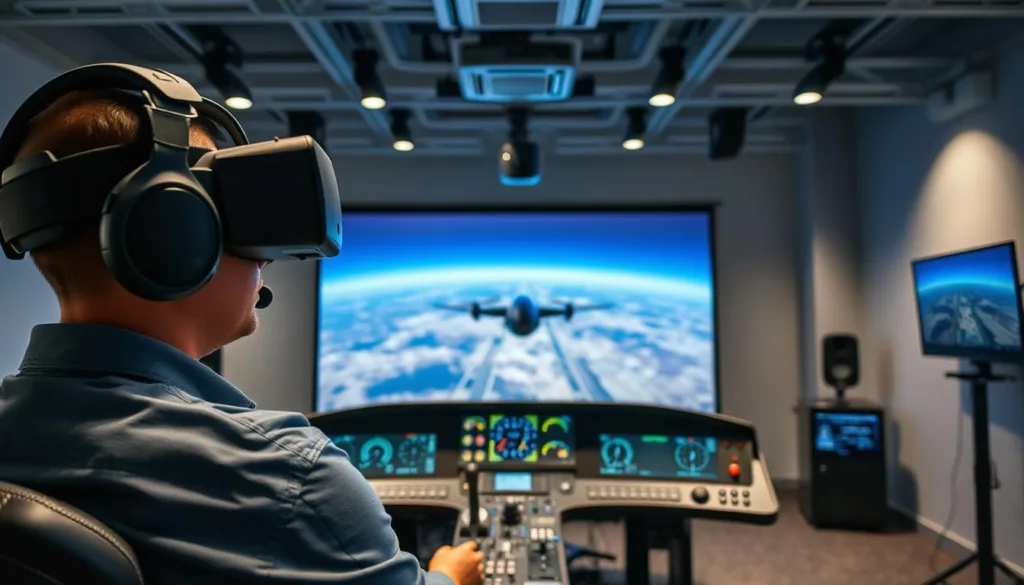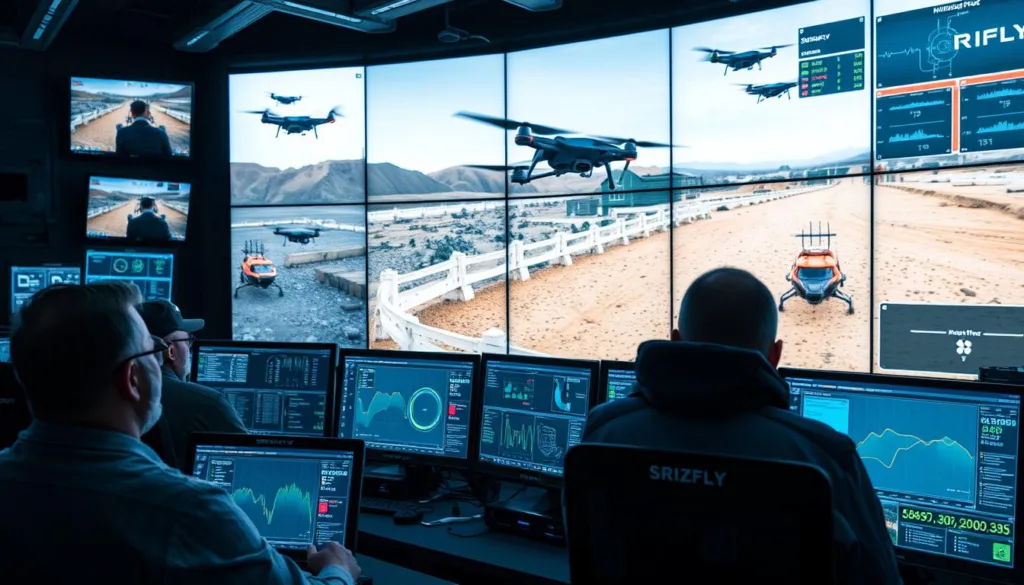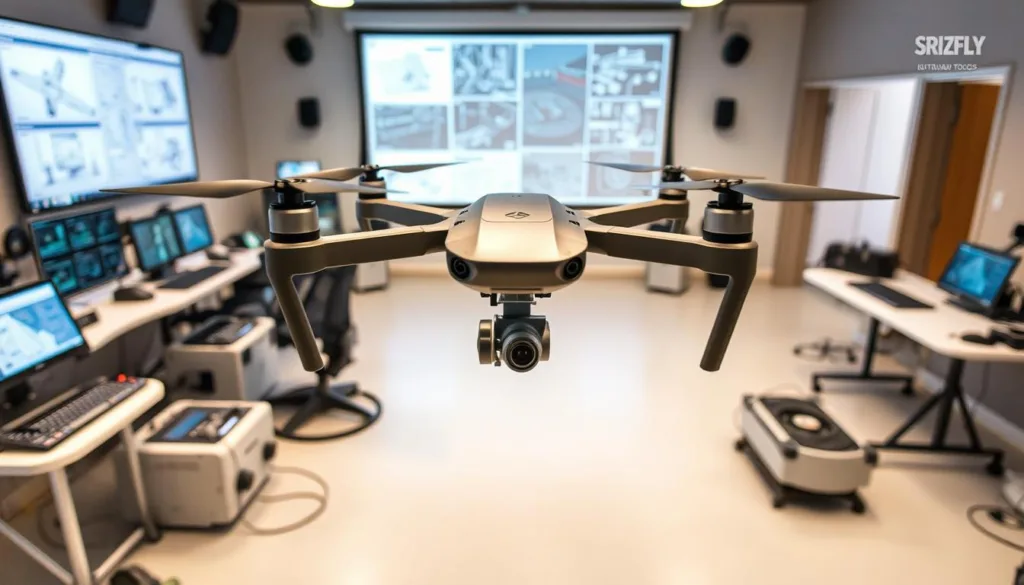In today’s rapidly evolving drone landscape, developing a robust UAV training curriculum is essential for both compliance and safety. This guide delves into the fundamental UAV training curriculum tools and resources required to equip future drone pilots. As the FAA Part 107 regulations become increasingly crucial, understanding these mandates will provide a solid foundation for training programs. Institutions and enterprises will benefit from this comprehensive overview of drone pilot training resources, which includes innovative methods and best practices to enhance learning. With a focus on effective drone certification study guides, we aim to empower educators and trainers with the tools necessary to shape successful, skilled UAV operators.
Key Takeaways
- UAV training curriculum tools are essential for compliance and safety.
- Understanding FAA Part 107 regulations is critical for effective training.
- Utilizing drone pilot training resources enhances skill development.
- Innovative teaching methods are vital for engaging students.
- Drone certification study guides streamline the learning process.
- Comprehensive training leads to more proficient UAV operators.
Understanding UAV Training Needs
Effective UAV training requires thorough understanding of regulatory and operational demands. Meeting FAA compliance stands at the forefront of a UAV operator’s journey, ensuring adherence to safety standards and industry regulations. Knowledge of the FAA Part 107 is critical, as it outlines essential guidelines concerning certification, airspace classifications, and pre-flight protocols. A strong foundation in these areas minimizes risks associated with drone operations.
The Importance of Compliance with FAA Part 107
FAA compliance is not merely a legal requirement but a framework that enhances operational integrity. Operators must grasp various elements of the regulations, including airspace restrictions and safety checks. This knowledge will enable them to navigate challenges with confidence and maintain safety for themselves and others involved in UAV operations.
Identifying Key Skills for UAV Operators
Mastering key UAV operator skills is essential for successful drone flight. Effective training programs should focus on practical abilities such as flight operations, safety protocols, and routine maintenance. These skills should be developed in alignment with drone certification resources that guide newcomers through initial steps and advanced methodologies. Engaging in hands-on training further ensures that operators are prepared to apply their skills across diverse applications, from mapping to inspections.
Benefits of Using Flight Simulators
Using flight simulators stands as a pivotal step in enhancing UAV training programs. These tools deliver significant advantages, especially in their capacity to provide cost-effective solutions for aspiring UAV operators. Institutions and enterprises can leverage simulations to elevate training while minimizing operational costs. This transformation reaches beyond mere savings, contributing to a more effective educational framework.
Cost-Effective Training Solutions
Flight simulators present a smart approach to training. By reducing fuel expenses, equipment wear, and instructor time, these systems help organizations maximize their training budgets. The financial implications are significant; institutions can allocate resources to other crucial areas, thereby optimizing overall operational effectiveness. With flight simulators, training becomes accessible without the hefty expenses associated with in-field UAV operations.
Realistic Experience in a Controlled Environment
The realistic drone training experience offered by simulators enables operators to practice various maneuvers and respond to emergency scenarios safely. This controlled environment mimics real-world conditions without the associated risks. Instructors can continuously monitor performance, ensuring that students remain engaged and proficient in their skills. This interactive approach not only enhances knowledge retention but also builds confidence, crucial for operating UAVs effectively.
| Feature | Flight Simulators | Traditional Training |
|---|---|---|
| Cost | Lower operational costs | Higher fuel and maintenance expenses |
| Safety | Zero risk of accidents | Potential for hazardous situations |
| Performance Tracking | Instant feedback and monitoring | Delayed assessments |
| Environment Control | Fully adjustable training parameters | Uncontrollable external factors |
Introduction to SRIZFLY’s UAV Flight Simulators
SRIZFLY simulators redefine UAV training by integrating innovative technology with hands-on experiences. These advanced tools cater to educational institutions and businesses looking to sharpen their training programs. Understanding the features of our full-motion systems enhances the overall training experience, preparing students for success in their UAV operations.
Features of Full-Motion Systems
The full-motion systems offered by SRIZFLY provide an unparalleled environment for learners. Each simulator captures the intricacies of actual drone flight, allowing users to experience realistic maneuvers and scenarios. Key features include:
| Feature | Description |
|---|---|
| Realistic Simulation | Mimics real-world drone dynamics and controls. |
| Enhanced Feedback | Provides real-time performance metrics during training. |
| Adjustable Difficulty | Allows instructors to modify training challenges based on student needs. |
| Multi-User Capability | Supports simultaneous training for teams, enhancing collaborative skills. |
Immersive Training Experiences
Immersive training is at the heart of SRIZFLY simulators. By engaging users in lifelike scenarios, students gain confidence and competence before they fly actual drones. Our immersive training programs are designed to:
- Enhance muscle memory through repeated practice.
- Reduce training time and costs compared to traditional methods.
- Prepare operators for a range of real-world applications.

Designing an Effective UAV Training Curriculum
Creating an impactful UAV training curriculum requires careful planning and development. A focus on UAV training curriculum design allows educators to form structured lessons that maximize student engagement. Engaging lessons are essential as they cultivate interest and promote effective learning.
Structuring Lessons for Maximum Engagement
Effective structuring of lessons enhances student participation. By combining theoretical components with hands-on activities, students gain a richer understanding of the subject matter. Interactive discussions and group work further amplify engagement, making the learning process dynamic and enjoyable.
Incorporating Simulated Flight Scenarios
Implementing simulated flight scenarios within the curriculum is a game-changer. These practical experiences allow students to apply their knowledge in realistic environments, preparing them for actual flight operations. Real-world challenges encountered in simulations provide valuable lessons, strengthening their problem-solving skills and ability to adapt quickly.
| Curriculum Component | Description | Impact on Learning |
|---|---|---|
| Theoretical Lessons | Foundation of UAV knowledge, covering regulations and safety | Builds fundamental understanding |
| Practical Exercises | Hands-on training including drone operation | Enhances skill acquisition and retention |
| Simulated Scenarios | Realistic flight challenges for practical application | Improves decision-making and adaptability |
| Group Discussions | Collaborative exploration of UAV topics | Encourages critical thinking and teamwork |
Striking the right balance between theory and practice ensures that students remain motivated and informed, ultimately leading to successful training outcomes.
Enhancing Safety in UAV Training
Safety remains a critical focus in UAV training, ensuring that both instructors and students are well-prepared to face potential challenges. A strong understanding of risk management practices forms the foundation of effective UAV training safety. This knowledge allows the team to identify hazards and implement measures to minimize risks associated with drone operations.
Understanding Risk Management Practices
Incorporating established risk management practices during UAV training creates a systematic approach to identifying and mitigating hazards. It involves recognizing potential risks associated with various situations and developing strategies to address them proactively. This proactive mindset fosters a culture focused on safety, encouraging responsible decision-making among trainees.
Safety Protocols for Virtual Training
When conducting virtual training sessions, adhering to comprehensive safety protocols is essential. Simulating real-life scenarios while embracing safety measures allows students to recognize dangers they might face in the field. By embedding these protocols into virtual practices, trainees gain crucial experience that translates seamlessly into actual operations, enhancing their capability in real-world situations.
Measuring Success in UAV Training Programs
Effective UAV training programs rely heavily on precise UAV training success measurements to gauge student performance. Defining clear evaluation metrics plays a pivotal role in this process, allowing educators to assess various aspects of learning outcomes. Metrics such as FAA exam passing rates, proficiency in essential skills, and overall practical performance evaluations provide a comprehensive view of student readiness.
Metrics for Evaluating Students
All students deserve thorough evaluation to determine their grasp of UAV operation principles. Implementing structured metrics establishes a benchmark for measuring knowledge and skill levels, essential for both students and instructors. Regular assessments enable insights into the effectiveness of teaching methods and highlight areas for potential program improvement.
Continuous Improvement Through Feedback
Feedback forms the backbone of an evolving training curriculum. Engaging both students and instructors in meaningful feedback loops fosters an environment conducive to growth. By systematically analyzing results and adjusting the program, we ensure that learning experiences remain relevant and meet the demands of an ever-changing industry. Prioritizing continuous improvement leads to enhanced training outcomes and promotes a culture of excellence.

Integrating Technology in UAV Training
Incorporating advanced technologies in UAV training significantly changes the educational dynamics. We leverage UAV technology integration to enhance learner engagement and deliver up-to-date knowledge. By utilizing specialized software for curriculum development, educators can tailor learning experiences that address various student needs and preferences.
Utilizing Software Tools for Curriculum Development
Effective curriculum development depends on using robust software tools that streamline the process. These applications enable instructors to create interactive lessons, quizzes, and simulations that resonate with students. Features in modern software can include customizable templates, assessment tracking, and multimedia support, all of which make lessons more engaging. This approach fosters a more profound understanding of UAV operations and principles, leading to better-prepared graduates.
Incorporating Drones in Real-World Scenarios
Integrating practical drone applications into the training curriculum allows students to witness real-world applications of their studies. By incorporating drones in simulated flight operations or field tasks, students engage with the complexities they may face as professionals. This hands-on experience is invaluable, offering insights into problem-solving and critical decision-making in various UAV contexts.
Collaborating with Industry Experts
Collaboration within the UAV industry creates significant educational advantages for training programs. Engaging in partnerships with professionals offers invaluable insights into current trends and practices. Such alliances enhance the training curriculum, ensuring it remains practical and relevant to the industry’s evolving needs.
Building Partnerships with UAV Professionals
Establishing partnerships with UAV professionals facilitates access to a wealth of experience and knowledge. These experts contribute to curriculum development, providing timely information about advancements in technology and industry standards. Through these collaborations, training institutions can tailor their programs to better prepare students for future challenges.
Guest Lectures and Workshops in Curriculum
Integrating guest lectures into the training curriculum exposes students to firsthand industry experiences. These opportunities promote networking and create valuable connections within the UAV sector. Workshops led by industry leaders offer practical insights, enriching the educational experience. Incorporating such interactive elements prepares students for real-world applications, aligning their skills with employer expectations.
Upgrading Your UAV Training Tools
Enhancing the effectiveness of UAV training programs is essential in today’s fast-paced environment. Organizations must prioritize upgrading training tools to meet the demands of new technologies. The implementation of the latest technology ensures that trainees receive relevant and practical skills that translate into improved job performance.
The Role of the Latest Technology in Training
Incorporating the latest technology within UAV training is critical for several reasons. Advanced simulators offer a realistic flight experience while minimizing risks associated with real-world training. These tools allow instructors to provide students with comprehensive training scenarios that reflect the current industry landscape. Furthermore, utilizing cutting-edge software applications enhances the learning journey, making it more engaging and effective.
Strategies for Consistent Curriculum Evaluation
Continual assessment of training programs through effective curriculum evaluation strategies ensures that educational practices remain in line with industry standards. By regularly reviewing course content and teaching methodologies, institutions can adapt to emerging trends and technologies. This proactive monitoring fosters an environment of ongoing development and improvement that benefits both educators and aspiring UAV operators.
| Training Tool Type | Benefits | Latest Technology Used |
|---|---|---|
| Flight Simulators | Realistic experience, risk-free learning | Full-motion systems, VR integration |
| Software Applications | Interactive learning, flexible content | Cloud-based platforms, AI-driven analytics |
| Curriculum Evaluation Tools | Continuous improvement, adaptability | Data analytics software, feedback systems |
Getting Started with SRIZFLY
Embarking on your journey with SRIZFLY is streamlined to ensure you find the best UAV training solutions for your needs. Our team of experts is ready to assist you in identifying your specific training requirements, allowing for a thorough discussion about how our advanced simulators can transform your educational or operational approaches.
Steps to Contact Our Team
To initiate the process, simply reach out to us via our contact channels. Our knowledgeable team will walk you through the options available, providing insights on the capabilities of our simulators. We also invite you to take advantage of our 10-day free trial, a unique opportunity to experience our innovative technology firsthand.
Customizing Your Training Experience
Training customization is at the heart of what we offer. By collaborating with us, you ensure that your training experience is tailored to address your precise objectives and challenges. With SRIZFLY solutions, you will receive the most effective resources designed to elevate your UAV skills to new heights.
FAQ
What are the essential UAV training curriculum tools?
The essential tools include comprehensive drone pilot training resources, drone certification study guides, and UAV online learning platforms. Utilizing these resources ensures compliance with FAA regulations and equips learners with the necessary skills.
How does flight simulator training benefit UAV operators?
Flight simulators provide cost-effective training solutions by reducing expenses related to fuel and equipment wear. They also offer a realistic experience in a controlled environment, allowing students to practice maneuvers and emergency procedures without risk.
What should be included in the UAV training curriculum?
An effective UAV training curriculum should include flight operations, safety protocols, maintenance knowledge, and the incorporation of simulated flight scenarios to enhance hands-on experience and engagement among students.
Why is safety training important in UAV education?
Safety is paramount in UAV training environments. Understanding risk management practices helps instructors and students mitigate operational hazards and establish a secure learning atmosphere, leading to responsible operating behaviors.
How can we evaluate the effectiveness of a UAV training program?
Implementing metrics such as passing rates on FAA exams, skill proficiency assessments, and practical performance evaluations helps determine the effectiveness of UAV training programs. Continuous feedback ensures ongoing improvement.
What role does technology play in UAV training?
Integrating technology, such as sophisticated software tools and enhanced simulators, transforms educational practices and enriches student engagement, allowing for tailored curriculum development that caters to diverse learning styles.
How can collaboration with industry experts enhance UAV training?
Collaborating with experienced UAV professionals provides training programs with cutting-edge insights and practices, enhancing students’ exposure to real-world experiences through guest lectures and workshops.
Why is upgrading UAV training tools necessary?
Upgrading UAV training tools is vital to maintain high educational standards. Utilizing the latest technologies and consistent curriculum evaluation ensures that training remains aligned with evolving industry standards and regulatory requirements.
How do I get started with SRIZFLY’s UAV simulators?
To get started, simply reach out to our team to discuss your specific training needs. We offer a 10-day free trial of our simulators, allowing you to experience our innovative technology firsthand.



